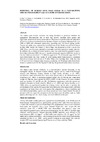Identificador persistente para citar o vincular este elemento:
https://accedacris.ulpgc.es/jspui/handle/10553/107121
| Campo DC | Valor | idioma |
|---|---|---|
| dc.contributor.author | Roo, J. | en_US |
| dc.contributor.author | Grossa, E. | en_US |
| dc.contributor.author | Lenoir Schuchardt,Dominique | en_US |
| dc.contributor.author | Socorro, J. | en_US |
| dc.contributor.author | Hernández-Cruz, C. M. | en_US |
| dc.contributor.author | Izquierdo, M. S. | en_US |
| dc.contributor.author | Fernández-Palacios, H. | en_US |
| dc.date.accessioned | 2021-05-05T13:17:00Z | - |
| dc.date.available | 2021-05-05T13:17:00Z | - |
| dc.date.issued | 2010 | en_US |
| dc.identifier.uri | https://accedacris.ulpgc.es/handle/10553/107121 | - |
| dc.description.abstract | The almaco jack Seriola rivoliana has being identified as potential candidate for aquaculture diversification due to their fast growth, excellent flesh quality and significant international market opportunities. The present work describes the adaptation of Seriola rivoliana broodstock in the Instituto Canario de Ciencias Marinas from year 2006 to 2009 and subsequent maturation, spawning and first larval rearing results. Twenty sub adults were captured by local fisherman in the South coast of Gran Canaria in May 2006. Initial fish weight (1.76± 0.25kg), was increased to 6.0± 1.1kg in July 2009. Every year fish were sampled to determine individual growth in weight and size. In addition, the evolution of sexual maturity state was established by gonadal biopsies. From July to October 2009, the use of repetitive hormonal injection (LHRHa) results in ten successful spawns (total 2.75 Millions eggs) with 72% of buoyant eggs and 92.5% mean fertilization rate. First results of larval rearing under Semi-intensive conditions showed an average survival rate 2.5% after 30day after hatching (dah) while less than 0.3% survival was obtained under intensive conditions. At 90 dah juveniles from Semi-intensive systems reach 26.7± 4.7g and 14.2±5.2g fish produced under intensive system. | en_US |
| dc.language | eng | en_US |
| dc.subject | 310502 Piscicultura | en_US |
| dc.title | Potential of almako jack Seriola rivoliana as a fast-growing species for European aquaculture diversification | en_US |
| dc.type | info:eu-repo/semantics/conferenceobject | en_US |
| dc.type | ConferenceObject | en_US |
| dc.relation.conference | Aquaculture Europe 2010 | en_US |
| dc.identifier.doi | 10.13140/2.1.3260.1609 | en_US |
| dc.investigacion | Ciencias | en_US |
| dc.type2 | Actas de congresos | en_US |
| dc.description.numberofpages | 2 | en_US |
| dc.utils.revision | Sí | en_US |
| dc.date.coverdate | Octubre 2010 | en_US |
| dc.identifier.ulpgc | Sí | en_US |
| dc.contributor.buulpgc | BU-BAS | en_US |
| item.grantfulltext | open | - |
| item.fulltext | Con texto completo | - |
| crisitem.author.dept | GIR Grupo de Investigación en Acuicultura | - |
| crisitem.author.dept | IU de Investigación en Acuicultura Sostenible y Ec | - |
| crisitem.author.dept | Departamento de Biología | - |
| crisitem.author.dept | GIR ECOAQUA: Ecofisiología de Organismos Marinos | - |
| crisitem.author.dept | IU de Investigación en Acuicultura Sostenible y Ec | - |
| crisitem.author.dept | Departamento de Biología | - |
| crisitem.author.dept | GIR Grupo de Investigación en Acuicultura | - |
| crisitem.author.dept | IU de Investigación en Acuicultura Sostenible y Ec | - |
| crisitem.author.dept | Departamento de Biología | - |
| crisitem.author.orcid | 0000-0002-9660-230X | - |
| crisitem.author.orcid | 0000-0001-8048-3150 | - |
| crisitem.author.orcid | 0000-0003-4297-210X | - |
| crisitem.author.orcid | 0000-0003-1410-8154 | - |
| crisitem.author.parentorg | IU de Investigación en Acuicultura Sostenible y Ec | - |
| crisitem.author.parentorg | IU de Investigación en Acuicultura Sostenible y Ec | - |
| crisitem.author.parentorg | IU de Investigación en Acuicultura Sostenible y Ec | - |
| crisitem.author.fullName | Roo Filgueira, Francisco Javier | - |
| crisitem.author.fullName | Lenoir Schuchardt,Dominique | - |
| crisitem.author.fullName | Hernández Cruz, Carmen María | - |
| crisitem.author.fullName | Izquierdo López, María Soledad | - |
| crisitem.author.fullName | Fernández Palacios, Hipólito | - |
| Colección: | Actas de congresos | |
Visitas
157
actualizado el 30-nov-2024
Descargas
87
actualizado el 30-nov-2024
Google ScholarTM
Verifica
Altmetric
Comparte
Exporta metadatos
Los elementos en ULPGC accedaCRIS están protegidos por derechos de autor con todos los derechos reservados, a menos que se indique lo contrario.
